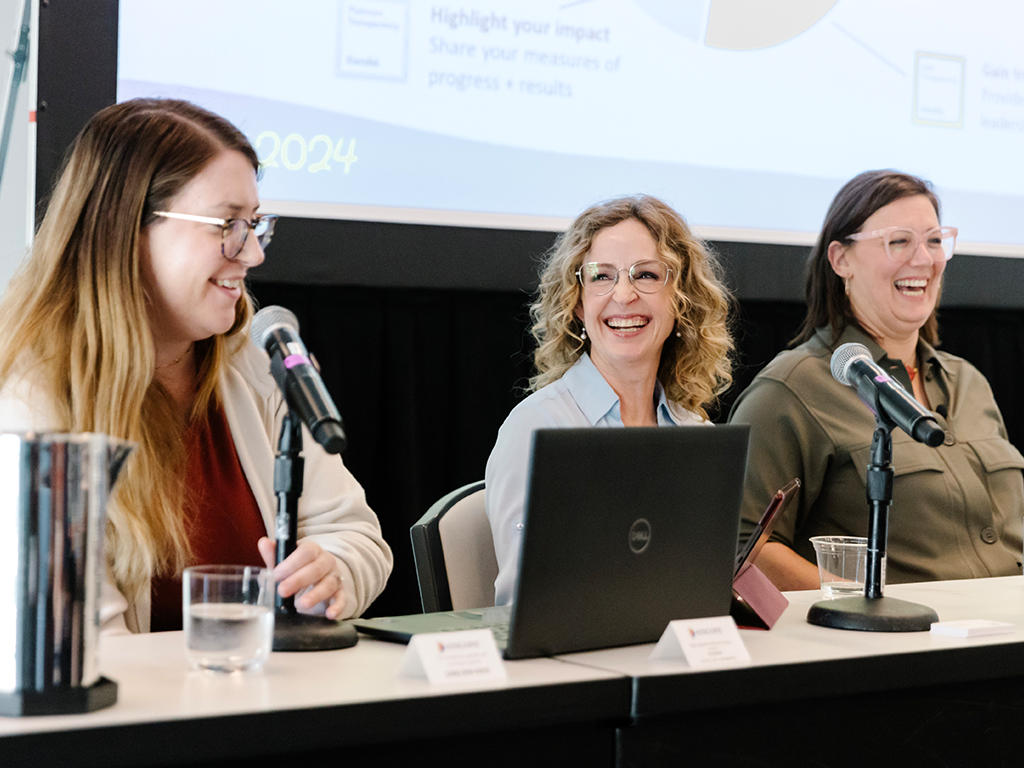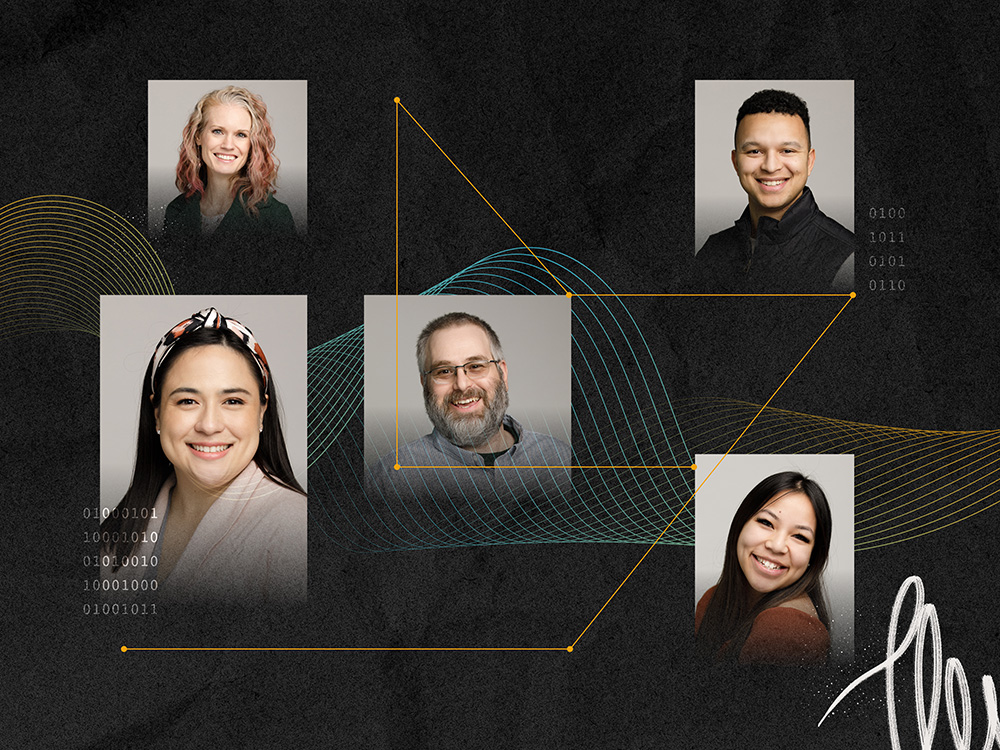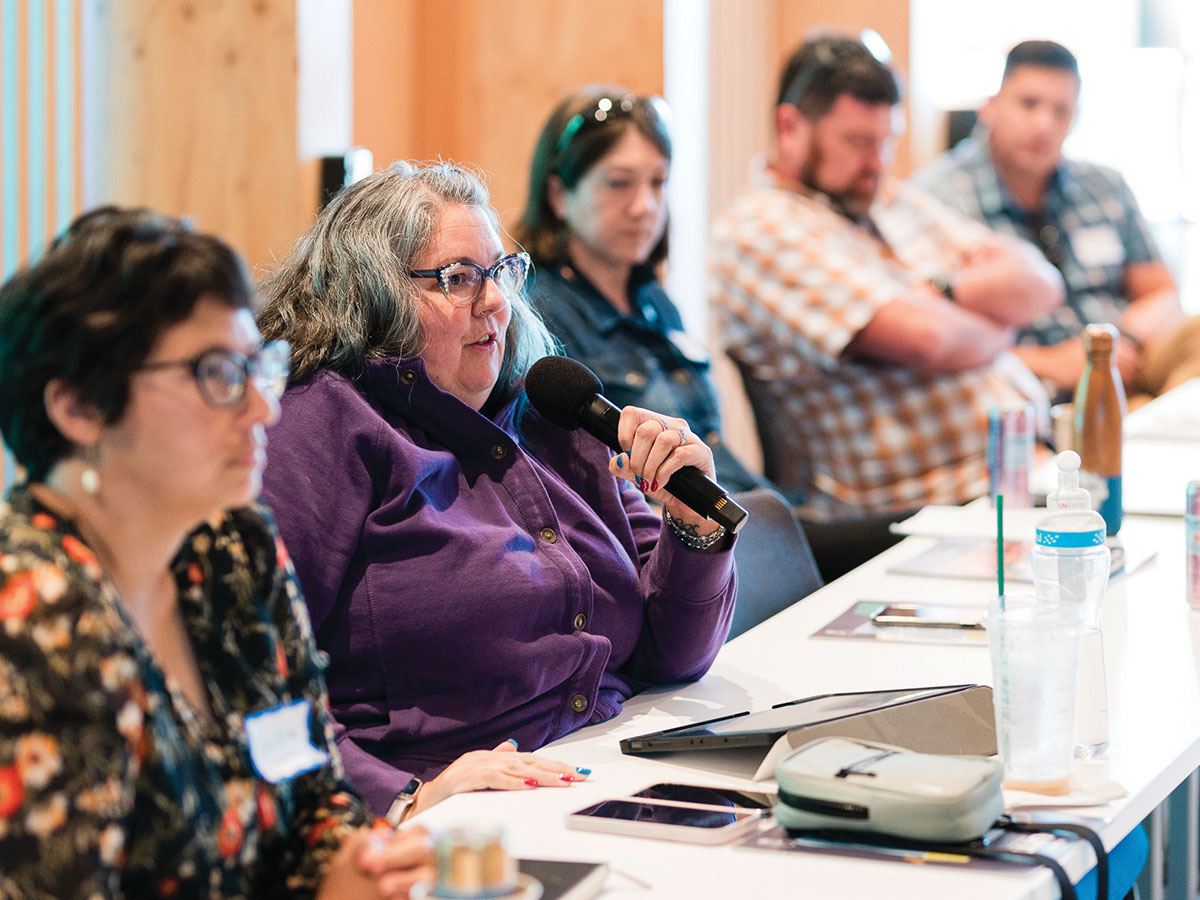
The social sector is facing a data crisis. Nonprofit data is siloed, dated, difficult to find, often of poor quality, and rarely shared or reused. This prevents the sector from being as effective as it could be and contributes to deep inequity in grantmaking practices and the administration of grant dollars to nonprofits.
Part of the problem is that we often don’t know where the nonprofit data exists or how to easily access it. Primary sources–like the IRS Form 990–has shortcomings, namely out-of-date data that doesn’t always accurately represent nonprofits. Consequently, funders rely on secondary data sources in the field that are specialized in specific areas that can inform the grantmaking process. But funders don’t often use them due to a lack of familiarity or a resistance to change their processes.
To help grantmakers navigate this issue, the PEAK2024 session “Transforming the Way Social Sector Data Flows” was designed to lift up the principle of building efficiencies in the sector by leveraging existing data repositories to reduce the repetitive stress injuries that nonprofits endure completing one-off data requests. While there is still much work to be done to perfect this flow, the conversation offered an opportunity to start to demystify where the data exists and how it can be reused in support of the grant lifecycle and other grantmaking activities.
PEAK Partnerships Director Davis Fischer led a panel of five powerhouse women to explore this issue: Impact Genome Registry™ Head of Product and Senior Vice President Sandi Boga, Roots and Wings Foundation Grants and Impact Manager Jamie Carroll, Candid Director of Product Management Alison Jannette, and Charity Navigator Board Chair Hope Lyons.
“You don’t know how you’re tying your practices to your values unless you have the right data to help you along your journey,” said Fischer, who, prior to PEAK, dedicated much of her 15-year tenure at Candid to supporting a social sector driven by better data, research, and analysis. “But while we throw these thought leadership pieces at you on why you should all be reusing data, we don’t tell you where the data is, how you access it and how you share it. We need to demystify those things so that you can better integrate data into your processes. If we get this right, nonprofits’ lives are easier.”
That’s why, in addition to Candid, PEAK invited organizations that each offer unique data sets: Charity Navigator, which collects and presents data in ways that help funders find and support nonprofits that align with their program and giving objectives; Impact Genome Registry™, which focuses on data that describes nonprofits’ impact; and Roots and Wings, a foundation born during the pandemic that has built its processes around the nexus of data reuse and trust-based philanthropy practices.
Lyons discussed how Charity Navigator allows nonprofits to share data that isn’t captured in Form 990 and to do so directly, empowering them to tell their own stories to potential funders. “This provides a comprehensive picture of an organization and builds confidence for donors—individuals and foundations—in giving to an organization,” Lyons said. “Finance and accountability are important pieces of the puzzle, but there’s a whole lot more that makes for a good nonprofit than how they manage money. It’s about how they are delivering on their mission. It’s about how organizations actually listen to the people that they’re working with and serving, that they are committed to equitable practices, that they are learning and improving how they do their work.” She went on to emphasize that, by focusing on improving data and connecting the dots between data, nonprofits and funders can better achieve their potential. She urged funders to consider drawing more on data available in repositories during their grantmaking processes, and to advocate that grants management systems leverage data from sector repositories via APIs [application programming interfaces], as it is a crucial step to avoid being left behind in the event that there is another 2020. “The data that we collect and analyze is drawn on by multiple audiences serving and supporting nonprofits. Funders using shared, robust data would minimize the burden on nonprofits and foundation staff—grants managers in particular—and improve the overall flow of data in the sector.”
Jannette—who has five years of specialized experience in data products, developer tools, integrations, and philanthropy—shared how Candid is looking to support the continuum of information needs for the sector with programs like Demographics via Candid and API integrations to the whole Candid profile. “The most common use case for grants management system integrations is integrating Charity Check data in order for funders to complete their due diligence on the organization. And some grants management systems prepopulate applications with data nonprofits provided to Candid,” Jannette shared. “But then there is a growing number of use cases for integrations with demographic data. Last year, we made a big push to reduce nonprofit burdens by making demographic data available for free and six grants management software vendors implemented the data into their native platforms, making that information easily available to funders through their grants management system.”
The Impact Genome Registry™ standardizes, stores and measures program impact data to allow allows funders to discover, verify, and benchmark nonprofit portfolios by impact. Combined with their work to create a universal funding application form, they aim to both streamline reporting processes and widen the tent of who ultimately receives funding. “Our mission is to ensure that the smaller nonprofits are on equal footing with the more established ones, and receive their fair share of funding dollars,” Boga said. Small nonprofits can use the Impact Genome Registry™ to measure their impact and make program design decisions based on what actually works. In a perfect world, nonprofits would report once, and use their Verified Impact Report across all funders. “This approach elevates the influence of smaller nonprofits and allows decisions to be made purely based on impact versus relationships.”
But, as Carroll observed, “We have to do a lot of homework on our end as funders to make sure a nonprofit aligns with our mission and vision. And, it’s a two-way street. We also want to make sure that our priorities and our philosophies align well with what the nonprofit’s intentions are for their work. By the time an organization gets an application or gets the opportunity to apply, we’ve already pre-filled the application. Then we follow up with a conversation to make sure that we’re not making assumptions about their work and that we capture the nuance and richness of the organization in ways you can’t find online.” She went on to note the importance of sharing the information with other funders. “We learn so much as foundations,” she said. “How can we take what we’re learning and make sure our knowledge reaches the broader sector? For example, we work with Candid to share data on who we’re making grants to. Another easy lift is to share applications nonprofits complete for you and share them with other funders.”
“The three main ways we are all supporting trust-based philanthropy is that we give funders the tools they need to do their own homework so they don’t ask nonprofits for the same information again,” Boga said in closing. “We also want to streamline the granting process—getting rid of paperwork is a core tenet for all of us. Finally, we all offer portals for nonprofit education to help them understand how to use data.” And by extension, working with data providers is a key way that funders can provide support beyond the grant.
We have a lot of work to do to build deeper collaboration between data providers, nonprofits, and funders so that we are only collecting what will be used, it is funneling into grants management systems where is can serve and we are protecting nonprofits rights to their data while supporting the principles of trust-based philanthropy. There’s no better time than now to get started on that journey.
Photo Credit: Julie Harmsen Photography




